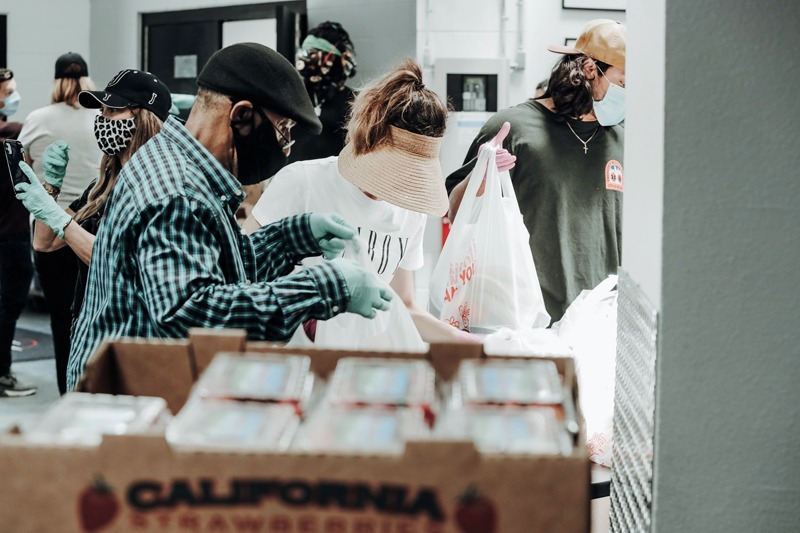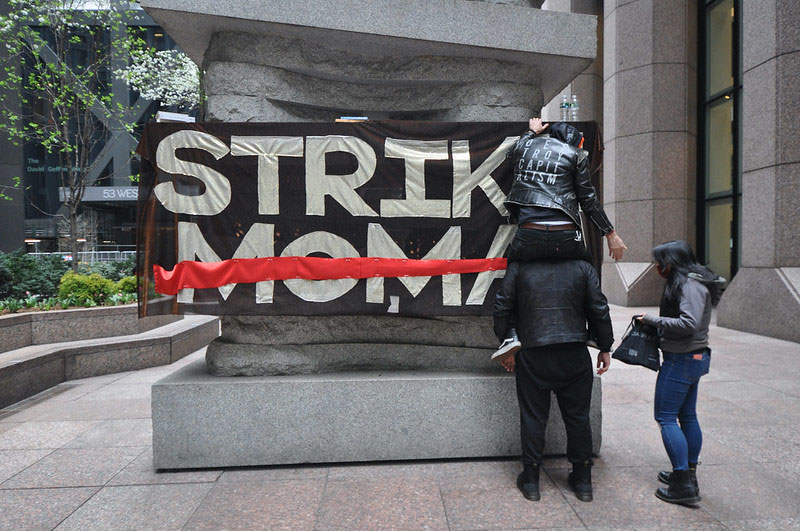
April 14, 2017; Pittsburgh Tribune-Review and Albuquerque Journal
The Nonprofit Quarterly has been writing about the phenomenon of rage donating (or fundraising) since the election of Donald Trump last November. Due to a combination of his politics and personality, coupled with the shock of seeing their candidate go down in an unexpected defeat, liberal donors and activists have been going full-tilt to raise money and volunteer for the causes that inspire them.
It’s happening all across the country, but it’s too early to tell if it will last. Might the election results be like the natural disaster that captures the hearts of volunteers and donors as its devastation unfolds before the public in the media, only to recede into apathy and irrelevancy as people move on to new challenges, concerns, and situations? Or might it be the gift that keeps on giving, with each day bringing a new outrage from Washington and a new reason to hunker down and “resist” by supporting the charities and nonprofits that are upholding people’s progressive values and interests? And how much of that sustainability is actually within the control of the nonprofit sector itself?
Blackbaud’s Stephen MacLaughlin writes in the Huffington Post about this phenomenon, pointing to the well-known significant giving surges to nonprofits following the election of Donald Trump. Planned Parenthood received nearly 80,000 donations just three days after the election. The ACLU got more than $24 million in online donations in a single weekend, and Meals on Wheels experienced a surge in donations after reports of federal budget cuts.
“What we are witnessing is not a revolution—but instead an evolution of how episodic giving has changed over time. This next step brings together the powerful sentiments of activists with the much-needed support of donors. We are seeing how ‘actigiving’ is accelerating how people move from a just hearing about the causes they care about to quickly supporting them with a gift,” he says.
In some ways, this is nothing new—during World War I, the Red Cross raised more than $114 million (over $2 billion in today’s dollars), and whenever there has been a flood, hurricane, earthquake, or other natural disaster, people have decided to help others in need. But, as the article points out, in the last 20 years, “the Internet has amplified and accelerated how nonprofits engage with supporters when critical events take place around the globe. Every single major disaster or incident since then demonstrates that the Internet is a first response channel of choice for donors.”
The trend is culminating with social media augmenting media coverage to boost giving in short periods of time, with the new political reality shifting it from a disaster-response to supporting a movement people care about passionately and urgently.
The Pittsburgh Foundation tells the Pittsburgh Tribune-Review it was worried about 2016 fundraising totals, which were significantly below those of the previous year. But that changed after the presidential election, when “charitable contributions came pouring in…so fast that the foundation took in donations at almost double the pace it did in the last month of 2015.”
The Foundation’s CEO explains that the election and political climate caused people to hold off on giving because of concerns about where the markets might go and what changes there might be in tax policy. Then, in December, the foundation’s donations ran 80 percent above December 2015. He said that while it is not unusual to see donations increase after an election, this was much larger.
Sign up for our free newsletters
Subscribe to NPQ's newsletters to have our top stories delivered directly to your inbox.
By signing up, you agree to our privacy policy and terms of use, and to receive messages from NPQ and our partners.
But the biggest increase was in donors to human service organizations, those which focus on improving the lives, education, and housing situations of children and single women raising families—the population groups and programs most at risk from policy changes and funding cuts in Washington. While President Trump’s immigration and refugee executive orders, along with his pronouncements on Planned Parenthood, have gotten the lion’s share of media coverage, no community of interest has been more impacted than environmentalists—and since the election, environmental groups have seen a surge in volunteers and donations.
The Albuquerque Journal reports that local environmentalists “are calling, emailing, showing up at meetings, donating money and offering to lobby legislators in support of measures aimed at promoting renewable energy in place of burning fossil fuels.” This comes in response to Trump’s promises to “end the war on coal” by rolling back measures aimed at curbing greenhouse gas emissions, and lifting a moratorium on the sale of coal-mining leases on federal lands.
“I am appalled that our natural resources are threatened now and it’s happening in a way that we can’t act quickly enough,” one activist, who recently began volunteering with the local Sierra Club chapter, told the paper. “I watched the election campaign with horror. I felt compelled to get out of the house and get active.”
The Sierra Club tells the Journal that they have a record number of volunteers, with an increase in attendance at club meetings as well as membership. Other groups are seeing a similar increase in support, sometimes double historic levels.
Environment New Mexico, a research and advocacy group lobbying for greater renewable energy requirements, has also experienced increases in support since the November election. People email asking how they can help, current donors to the cause are increasing their contributions, and new donations are flowing in. The group reports that people offer to write letters or make phone calls to legislators, and even go to the state Capitol.
Further, new groups have been formed in New Mexico as a result of the election, such as the Pueblo Action Alliance, recently formed by members of several New Mexico pueblo tribes who participated in the protest against the recently completed Dakota Access pipeline. Many environmental groups across America will be advocating, protesting, holding events and fundraising in overdrive this coming weekend in support of Earth Day on April 22nd.
So, can this newfound activism and fundraising energy be sustained over the long run? New donors need to be kept engaged, stewarded, and shown the impact of their gifts. Historically, emotionally driven episodic donors are difficult to retain over time, when their interest and commitment dissipates as the catalytic cause recedes into the past. Nonprofits will have to work to retain them.
MacLaughlin says in the Post that “today’s headlines and tweets are causing supporters to respond in record numbers for a variety of different nonprofit organizations.” His hope is that rage giving can expand and grow, but how well nonprofits steward new volunteers and donors will be critical to sustaining their support.—Larry Kaplan













